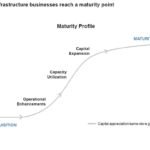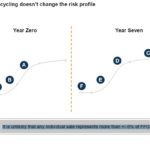Contents
The Brookfield group of companies recently held its 2018 Investor Day. This article touches upon the content of the Brookfield Infrastructure Partners (BIP) presentation.
I view BIP as having significant long-term growth potential and the ability to continue to generate attractive investment returns. As a result, I have acquired additional units for the FFJ Portfolio.
Summary
- BIP adheres to BAM’s 5 core principles and employs a capital recycling program in which it rotates its investment from mature assets with lower IRR potential to new opportunities in which it can generate superior returns.
- BIP’s capital allocation model has three priorities of which the 3rd is to distribute ~60 – 65% of every dollar of FFO to unitholders.
- I view BIP as an attractive long-term investment suitable for investors seeking a safe and steadily increasing stream of quarterly distributions.
- I have just acquired several hundred BIP units for the FFJ Portfolio.
Introduction
As a long time shareholder of Brookfield Asset Management (TSX: BAM-a) (NYSE: BAM), I continue to be impressed with the entire group of companies. It is only recently, however, that I have decided to increase my relatively insignificant exposure to the Limited Partnerships to slightly more meaningful levels.
If your primary objective is to generate long-term capital gains then investing in BAM might be the preferred investment. Should dividend income be of greater importance to you than the potential for capital gains then investing in the higher dividend yielding Limited Partnerships might be your preferred choice.
Another advantage to investing directly in the Limited Partnerships is that you can target your investment to specific sectors. You may, for example, wish to have exposure to the infrastructure space but not the real estate space.
On October 3rd I uploaded a post on Brookfield Property Partners L. P. (TSX: BPY-UN.TO) (NASDAQ: BPY).
After listening to the Brookfield Infrastructure Partners L.P. (TSX: BIP-UN.TO) (NYSE: BIP) component of the September 26th Investor Day presentation and conducting my analysis on this entity, I now provide a brief overview of BIP.
Overview
BIP’s Investor Fact Sheet can be accessed here.
BIP is very much like BPY in that it adheres to BAM’s 5 core principles:
- Acquire high quality assets;
- Invest on a value basis;
- Enhance value through operations;
- Contrarian investing;
- Large-scale and multifaceted.
It is imperative that investors in any one of the BAM companies realize that the manner in which the businesses operate entails the use of a capital recycling program. When an asset is acquired, the intent is not to hold the asset in perpetuity. The capital recycling program instills capital discipline to ensure that businesses are sold when returns are maximized and not when cash is needed.
BAM and its LPs look for assets in which it can use its expertise to enhance the value of the acquired business. Unlike some members of its small peer group and institutional investors, the BAM entities have the expertise to acquire businesses in need of an overhaul and to make enhancements to increase the value of the acquired assets. Once the asset reaches the stage where it is almost ‘bond like’ the objective is to sell the asset and to redeploy the net sale proceeds into other assets where there are opportunities to generate superior returns.
BIP’s track record over the past decade demonstrates how well this strategy has panned out. It:
- has generated ~$3.3B from asset sales;
- has sold 10 businesses;
- the average holding period has been ~8 years;
- has generated a ~25% IRR.
By employing the use of a capital recycling program, BIP has been able to sell assets that are generating 6 – 10% IRRs (internal rate of return) and to redeploy the proceeds into new businesses that have the potential to generate 12 – 15%+ IRRs. In essence, it continually recycles capital from stabilized assets at or near peak values into higher-yielding strategies.
Investors have in the past expressed the following concerns about BIP’s capital recycling strategy.
The sale of assets can be lengthy and there is an element of uncertainty;
There may be a perception that BIP’s risk profile has changed when businesses are sold;
The need to redeploy capital may result in periods of excess liquidity (ie. cash may be raised from the sale of a business but the reallocation of these funds could take quite some time before BIP is able to redeploy these funds in other attractive investment opportunities).
BIP is well aware of these concerns and has endeavored to dispel them.
- BIP has ample access to capital. It has a $2B line of credit and also has the ability to issue preferred shares, debt, or equity.
- The sale of some businesses should not change BIP’s overall risk profile. BIP has several businesses that are at various stages within the ‘acquisition to sale’ lifecycle. Secondly, it is unlikely that any individual sale represents more than +/-5% of FFO.
- As far as having excess capital sitting around for a prolonged period of time which generates marginal returns, BIP has indicated they have seen no shortage of investment opportunities over the past 10+ years.
Source: BIP Investor Day Presentation – September 26 2018
Source: BIP Investor Day Presentation – September 26 2018
Please click here to read the complete version of this article.
Members of the FFJ community can access reports I generate on high quality companies which add long-term shareholder value. In an effort to help you determine whether my offering is of any value to you I am pleased to offer 30 days' free access to all sections of my site. No commitments. No obligations. That's 30 days from the time you register at absolutely no cost to you!





